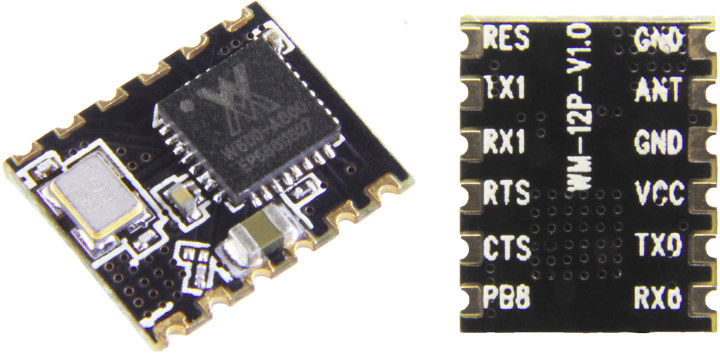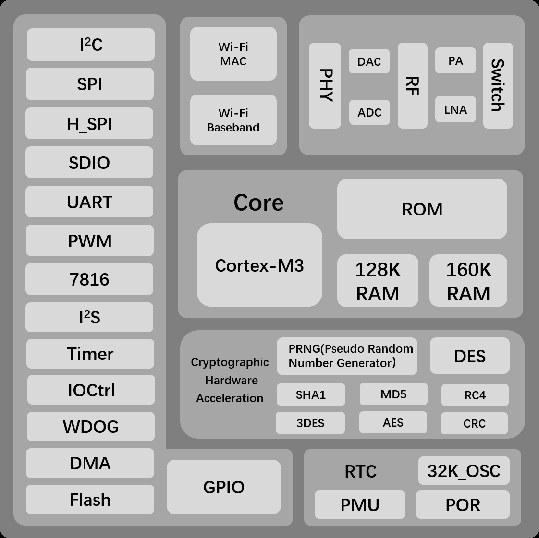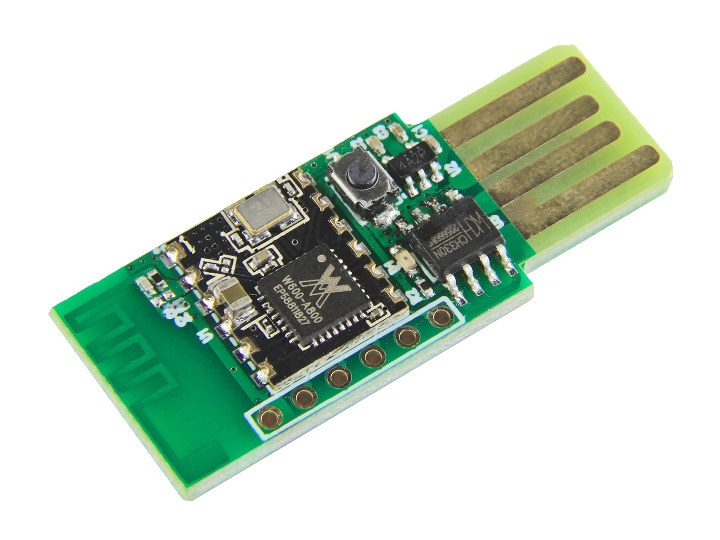WiFi used to be fairly expensive to add to MCU projects with spending $30 to $40 just for a WiFi module pretty common just less than 5 years ago, but this all changed thanks to Tensilica based Espressif ESP8266 modules selling for $5 in 2014, and an active community gathering behind the WiSoC, and related modules and development board.
ESP8266 modules are now available for under $2, and around two years ago it looked like we would have another option based on Arm Cortex-M3 with RTL8710 modules such as Pine64’s PADI IoT stamp also selling for about $2 in single quantities. However, most people did not really the benefit of switching to another platform based on Arm for this type of applications, and the products never really took off, many went away, and PADI IoT stamp appears to be one of the few survivors.
Yet another $2 WiFi IoT module has appeared on Seeed Studio with Air602 WiFi module powered by Winner Micro W600 Arm Cortex-M3 WiSoC.

Air602 WiFi module specifications:
- WiSoC – WinnerMicro W600 Arm Cortex-M3 microcontroller with 1MB Flash, RF Transceiver, CMOS PA, BaseBand
- WiFi Connectivity
- IEEE802.11 b/g/e/i/d/k/r/s/w/n up to 150 Mbps
- Frequency – 2.4~2.4835 GHz
- Output Power
- 802.11b, DSSS 1Mbps, POUT = +17dBm
- 802.11g, OFDM 54Mbps, POUT = +10dBm
- 802.11n, OFDM MCS7, POUT = +10dBm
- Features – Wi-Fi WMM, WMM-PS, WPA/WPA2, WPS, WiFi direct
- Protocols – TCP, UDP, ICMP, DHCP, DNS, HTTP
- Expansion – 12x castellated holes with 2x UART supporting RTS/CTS up to 2 Mbps, 1x SPI device up to 50 Mbps, 7x GPIOs, antenna, power signals
- Operating Voltage / Current – 3.3V / 110mAPS Mode 35mADTIM = 1
- Dimensions – 12 x 10 mm
The module is programmable using AT command and/or Luat programming language combining Lua and AT commands. The module is really small, as for reference the popular ESP-01 module measures 24.8 x 14.3 mm, or nearly three times as big as Air602! The trick to achieve this ultra-small size is to NOT include an antenna at all, instead exposing the antenna pin only.

Winner Micro W600 block diagram also shows 160KB+128KB of RAM, crypto hardware acceleration, RTC, and other peripherals and interfaces.
Air602 has the same type of target applications as ESP8266 with smart home, smart toys, industrial control , Internet of Things applications, and more…
Getting started with the module only may not be the most convenient, since you’d have to take care of power and an antenna, but luckily you don’t really need to care at this stage since Seeed Studio offer an Air602 development board for $2.90 – including Air602 module – that connects over USB and takes care of those little details.

I’m not convinced it brings much over ESP8266, and there would be a lot of work to bring software support up to the task, but maybe I’m missing sometimes, so we’ll have to see how things turns out. You may also find more details and some download links on WinnerMicro W600 product page (which did load slowly here).
Thanks to PuceBaboon for the tip.

Jean-Luc started CNX Software in 2010 as a part-time endeavor, before quitting his job as a software engineering manager, and starting to write daily news, and reviews full time later in 2011.
Support CNX Software! Donate via cryptocurrencies, become a Patron on Patreon, or purchase goods on Amazon or Aliexpress




